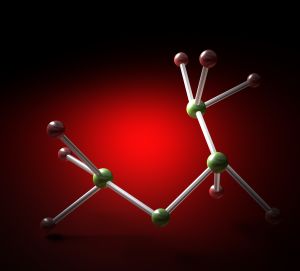Hello again,
At the outset, I wish all a Happy & Prosperous 2013.
NATIONS – CAUTIOUS OPTIMISM
The majority of readers would be back at their desks after the holiday break with a silent prayer on their lips for an accelerated regional and global economy revival – the former to boost its (respective) nation’s economy and the latter to provide a fillip to global trade, thereby benefiting the exchequer.
Stock markets around the world have rejoiced at the U.S. averting the fiscal cliff. The Dow and S&P registered sharp gains. The heartening feature, of course, was the extension of the wind energy Production Tax Credit (PTC) till end 2013 – the 2.2 cents/kWh incentive for wind power plants. The extension of the tax credit has huge implications for the composites industry especially for glass/carbon fiber (and fabrics thereof) and resin producers.
Fortunately, politics did not play spoilsport on the renewable energy policy.
JIGSAW PUZZLE ?
In a recent weekly piece, a columnist from Export Development Canada likened the world economy of the past four years to scrum – a rugby configuration. Globally, powerful opposing forces have been locked together in an epic struggle between growth and decline, with neither side prevailing. Initially puzzled and confused, people became despondent and resigned to deadlock as the new permanent state of affairs. The European economy could drag in 2013. Japan’s recent growth burst has been attributed largely to reconstruction funds and unlikely to last this year. The mighty BRICS economies are flattering to deceive. In spite of being in the news for numerous reasons, U.S. revival looks optimistic as industrial capacity is within a hair of pre-recession limits with Corporations sitting on trillions of cash which they are just about to start spending. The shale gas boom (low energy costs) has also served to act as a timely catalyst for the manufacturing renaissance.
A silver lining on the horizon in 2013 ? A U.S. economy on the mend for valid logical reasons (and not wishful thinking) may just be the answer.
SEAT FRAMES – DESIGN REVOLUTION
Composites have replaced spot-welded steel wire in a rear seat cushion frame for the 2012 Kia Motor K9 sedan, thereby entailing a 25% weight reduction and 10% cost reduction. The frame uses a long glass fiber reinforced Polypropylene (PP) with pellet lengths of 13-15 mm and high-crystallinity PP as the base resin [Plastics Today]. The folding composite seat back comes in two versions – an one-piece seat back and a split version. The parts are reportedly the first using injection molding to realize a completely flat rear floor structure. A major advantage of the rigid rear seat cushion frame is passenger protection. During frontal collision, passenger bodies tend to move down towards the ground, resulting in seat belts engaging in the stomach area and potentially damaging internal organs. The optimized structure of the new seat cushion frame supports the passenger in the right position so that the seat belt starts to engage in the pelvic region. Pressure and temperature sensors were reportedly used to prevent warpage on such large projected molding area. Significant mold flow analysis was carried out to optimize injection gate locations to minimize part distortion and avoid weld lines in stress bearing areas. To achieve further weight reductions, the PP composite technology technique envisages use of woven type fiber reinforcements.
What better advertisement for composites when it comes to light weighting and passenger safety in sedans?
Thermoplastic composites based on hybrid co-mingled fibers (glass with polyamide, PP, PET) can be processed into semi-impregnated thermoplastic preforms (as woven or non-crimped fabrics) and molded in a single processing step. The quality of the component distribution in the co-mingled fiber affects the mechanical properties of the final composite. A recent study analyzes the blending quality along the length of the co-mingled fibers using a new blending index that combines the existing co-efficients of the lateral and radial distribution of fibers in the cross-section of hybrid fibers. Due to the combination of the fiber analysis along the fiber axis and in its cross-section, the new method, allows for the first time, a reliable comparison of the blending quality of co-mingled fibers [Sciencia].
HDPE REVOLUTION IN THE WORKS
A composite HDPE pipe that is lighter and easier to install than conventional HDPE pipe for transferring water in oil and shale gas fracturing, mining and agriculture? Introducing the multi-layered HDPE pipe reinforced with glass fibers that weighs 80% less than conventional HDPE pipe. A 30-foot length pipe weighs 130 lbs and can be installed by two workers as against 700-800 lbs for a conventional pipe requiring a crane for installation [Plastics News]. The U.S. Company that has developed the pipe claims that it is bendable.
Considering the spurt in new applications, it is not surprising that almost 33% of the NA demand for composites is in reinforced thermoplastics.
WIND – BLOWING STRONG
The share of electricity generated by renewables in the U.K. in Q3 2012 rose by over 25% (compared to the same period in 2011), mainly due to increased wind energy capacity. Renewable sources provided 11.7% of electricity in Q3. Per the Department of Energy and Climate Change, offshore wind energy increased by 54.2%, while onshore rose by 38.2% [Windpower Monthly]. According to the last “2012 Global Wind Power development outlook”, wind power had the potential to supply 12% of the world’s electricity needs and exceed 20% by 2030 [Energy Tribune]. Statistics from the International Energy Agency [IEA] indicate that China’s wind power installed capacity could reach 279GW by 2030, two points below the EU and that it could generate 330TWh of clean power by 2015. China’s new Five-year Plan calls for an installed capacity of 100GW by 2015 and 200GW of renewable energy by 2020 [Morning Whistle]. Meanwhile Vestas is in talks with Mitsubishi, Japan’s largest heavy machinery maker about developing an 8 MW offshore wind turbine which is 30% more powerful than the current record-holder [Bloomberg].
Big is beautiful, better and powerful…sure holds good for the wind energy sector where mega and giga are oft mentioned.
CORE TRANSFORMATION
Thermoplastics forming the core of sandwich facings with honeycomb structure and based on PU,PS PVC, PET are well known. Recent studies on core materials made of polycarbonate (virgin and regrind), ABS, HIPS utilize interconnected cells in a unique configuration of truncated pyramids with sloping cell walls. Drop weight tests conducted to evaluate the dynamic flatwise compression strength and flexural strength show the versatility of such sandwich panels to possess good strength as well as energy absorption characteristics [Sciencia].
Natural gas from shale rock formation is making the U.S. and Canada among the lowest cost producers of ethylene feedstock globally. It is envisaged that this could lead to almost 15 billion pounds of new PE capacity (at lower cost) being added in the region between 2012-2017. Long-term, the low-cost regions will be North America (NA) and the Middle East which would compete for global growth [Plastics News]. More than 2.5 billion pounds of new ethylene capacity will come online this year followed by an additional 3.5 billion pounds in 2014. Global PE demand growth is expected to average 4.7% from 2012-17 with NE Asia averaging 6.2 %, NA at 2.7% and Europe at 2.4%. HDPE demand in this period is forecast to grow at 5% with capacity climbing to more than 27% ! The bottom line ? PE pipe producers could hit a home run.
Would PE be the preferred material of choice over PP for LFT and variations thereof (including D-LFT, D-LFT-ILC) ? Some work needs to be done from a technology perspective knowing how non-polar PE is and its antipathy to adhesion/bonding ! But then, the industry has the wherewithal to tackle such challenges.
PAINTING – BEGINNING OF THE END ?
MIC Class A finish is claimed to have been achieved with 60% glass fiber reinforcement without the need for painting for an automotive application. The controlled crystallization rate employed during processing eliminates the need for painting without adversely impacting cycle time [Plastics Today]. The register vane component that directs air towards cabin occupants in Ford‘s 2013 models of Fusion, Escape utilizes polyamide 66 resin from Asahi Kasei Plastics. The upside was the saving in tooling cost following elimination of the painting process, in addition to reduced VOC emissions.
Studies were recently conducted on composite pressure vessels made of CFRP (carbon fiber and epoxy resin). Cylinders with a bias fiber orientation ranging from ± 40° to ± 60° were pressurized internally and they exhibited a matrix-dominated failure. Coupons with a fiber orientation of 50° or less exhibited a shear failure mode while those with 55° or more had a transverse failure mode. The gradual failure process was modeled and the stiffness degradation examined in the material co-ordinate system. Bi-axial stress-strain curves were simulated for each fiber angle. Results showed slight hardening in shear and significant softening in the transverse direction, pointing to the need to account for these post-yield effects [Sciencia].
MOLECULAR MARVELS
In a forced game of molecular tug-of-war, some strings of atoms can act like a lever, accelerating reactions 1000 times faster than other molecules. This recent discovery suggests that these molecular levers can drive mechanical and chemical activity among atoms leading to designing new, stress-responsive materials. A simple change in the backbone can affect the speed at which mechanically assisted reactions occur. Since many materials break down after repeated cycles of tugging, stress and other forces, channeling usually destructive forces into constructive pathways could trigger reactions that make the material stronger when it is most desirable. From a commercial perspective, this concept can extend the material’s lifetime that can translate into applications ranging from composites for airplane frames to biomedical implants [Science Daily]. This research is being supported by the National Science Foundation.
Styrene monomer prices hit new record highs almost on a daily basis in December 2012 and this streak has extended into January 2013 to date [Platts]. The key factor for this price rise has been its feedstock benzene, for which there was strong demand in the U.S. and China in H2 2012. Traders are bullish that this trend will prevail through Q1 2013.
SKY IS THE LIMIT ?
Building the world’s tallest skyscraper in 90 days ? Not a pipe dream according to a Chinese company that plans to construct a 220-storey skyscraper in just that time. The construction starts this month and would be complete in March. Aptly christened “Sky City”, the building will be 10 meters taller than the current record holder Burj Khalifa, Dubai [Yahoo News]. Using the famed Lego blocks concept, the company eschews architectural beauty for simplicity and prepares the pieces offsite. It then brings everything together by sliding one inside the other when construction commences. By breaking everything down into simple blocks piled on top of one another, it allows them to build at an amazing pace – their goal is 5 storeys a day !
Tall can be simple, yet elegant.
I sign off this post on a cautiously optimistic note…the world will continue to focus on sustainability and renewable energy (especially wind energy). 2013 is bound to be a better year for polymers and composites with changing market dynamics on the thermoplastics front due to the shale gas boom in NA. The U.S. is expected to lead the global recovery (albeit in a measured way) with increased industrial production riding on low energy costs and set the trend for a more vibrant economy in 2014; with Europe and the BRICS also (hopefully) contributing their mite.
Till the next post,
Cheers,
Email: SS@essjaycomposites.com
Twitter: @essjaycomposite
Website: www.essjaycomposites.com









You must be logged in to post a comment.